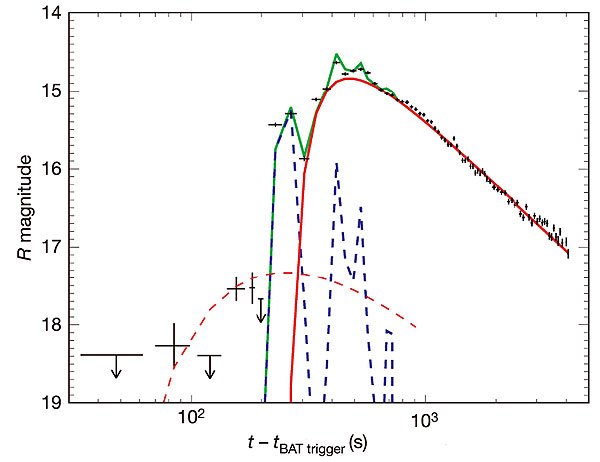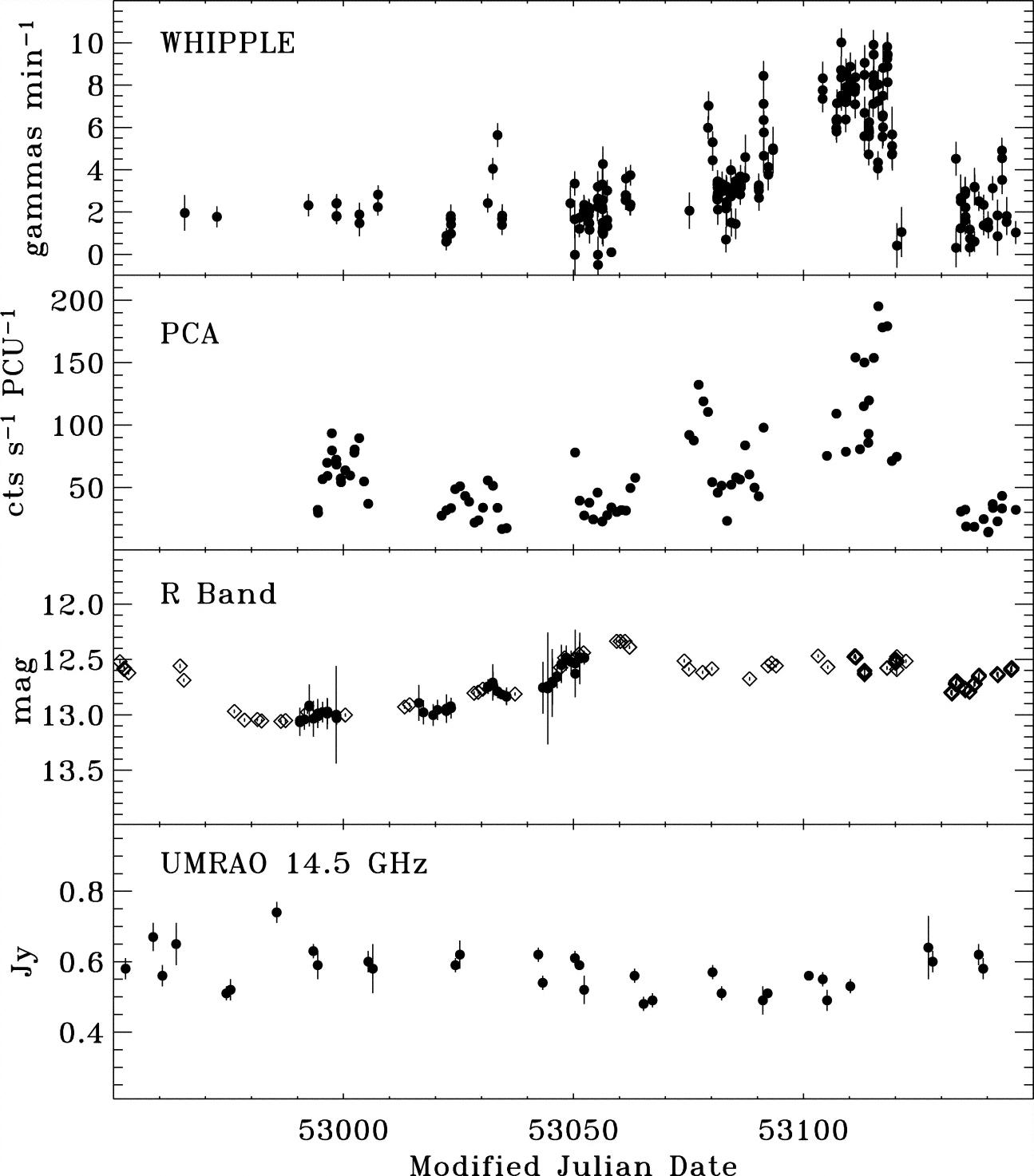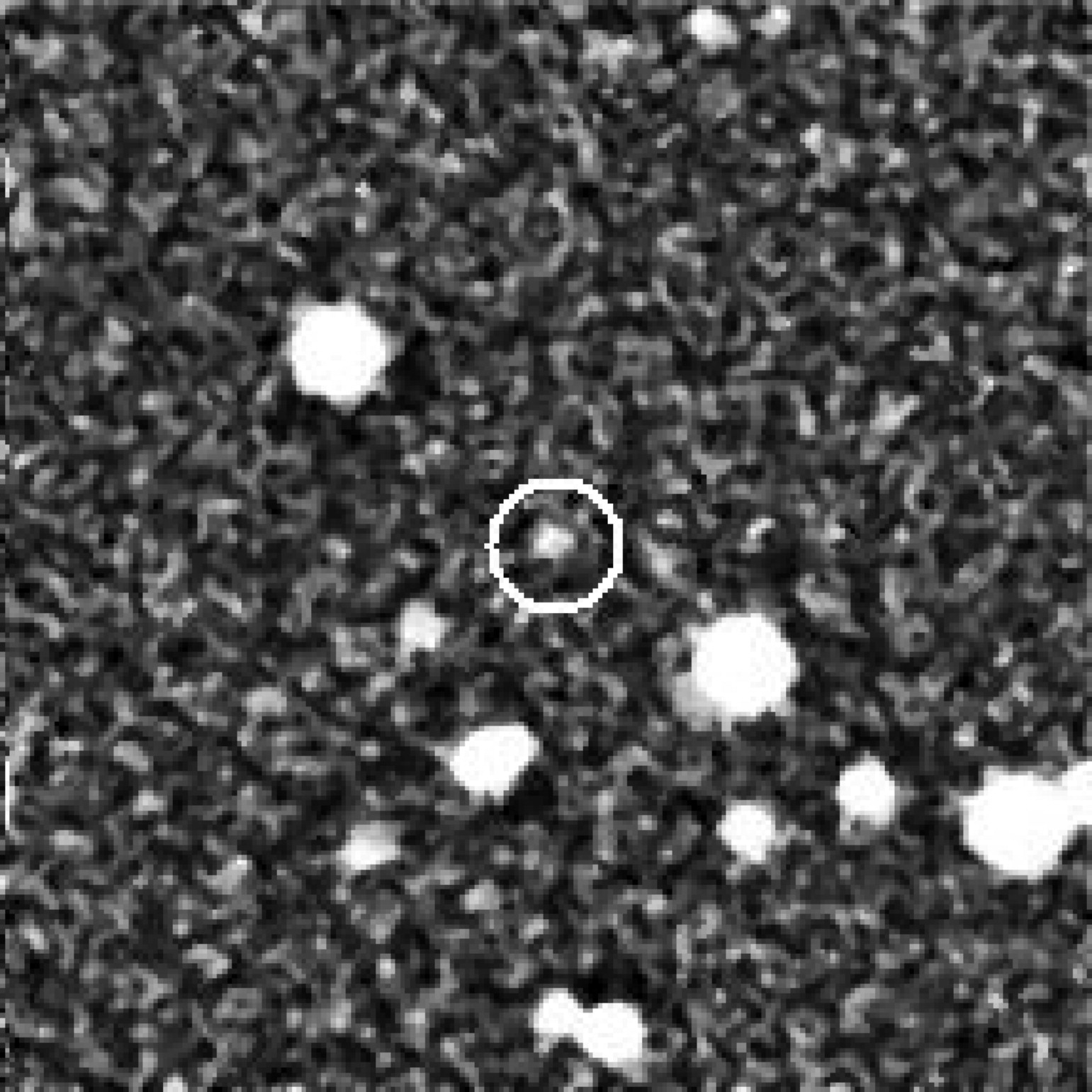
Probing a Shock Physics and a Particle Acceleration
One of the main questions in Gamma-Ray Burst (GRB) prompt emission is whether the gamma-rays are produced by electrons that are accelerated by an internal shock, external shock, or both. Recent observations of GRB 050820A by RAPid Telescope for Optical Response ( RAPTOR ; [1]) and GRB 061121 by Swift UV/Optical Telescope (UVOT; [2]) indicate that there are at least two components in the prompt optical emission (Figure 1). One component is the correlated optical emission with the prompt gamma-ray emission. The other component is a smooth rise-and-decay during the prompt gamma-ray phase. The first component could be interpreted as emission from an internal shock because of the similar variability between the optical and gamma-ray bands. The second component could be due to an external shock interacting with the inter-stellar matter. If this interpretation is true, some fraction of prompt GRB emission might originate from an external shock. Therefore, this could be a sign of the deceleration of the initial relativistic shell which is responsible for the internal shock during the prompt phase [3]. However, the observations by Robotic Optical Transient Search Experiment (ROTSE) have shown that there are a couple of cases where the early optical emission does not correlate with gamma-ray emission (e.g. [4]). These observations are clearly suggesting that the prompt GRB emission is much more complex than we had thought.

Figure 1: GRB 050820A: Prompt optical emission observed by RAPTOR. Green line shows the emission correlated with the prompt gamma-ray emission. Red line shows a smooth rise-and-fall emission which does not correlate with the prompt gamma-ray emission [1].
Blazars form a sub-group of radio-loud Active Galactive Nuclei
(AGNs) and show an extreme variability at all wavelengths [5]. The most accepted scenario is that a rotating
supermasive black hole surrounded by an accretion disk with an intense
plasma jet closely aligned to the line of sight is responsible for the
blazar emission. However, the fundamental understanding of the radiation
process in blazars requires extensive monitoring
campaigns at all wavelength. Especially, properties of variability
(including flares) and spectra using simultaneous data in various
wavelengths provides key information for a physical understanding of blazars.
As shown in Figure 2, gamma-ray and X-ray observations of the TeV blazar Mrk 421 do not have coincident counterpart at longer
wavelength, challenging the commonly accepted emission model [6].
Due to the capability of the long term monitoring of AGNs by
GLAST,
the probability of detecting this kind of behavior will increase.
For this reason, observations by coordinated ground telescopes at longer
(optical and radio) wavelength are mandatory to constrain the
processes responsible for the jet emission.

Figure 2: TeV, X-ray (RXTE, PCA), R-band and radio light curves of Mrk 421 [6].
Probing a High Redshift Universe
Both the prompt gamma-ray emission and the afterglow of GRBs have been predicted to be visible out to redshifts of ~ 20 [7]. Therefore, GRB should provide an excellent probe of the evolution of cosmic star formation, reinonization of the intergalactic medium, and the history of the metalicity of the universe (e.g. [7,8]). The highest redshift GRB 050904 (z=6.295), which was detected and localized promptly by Swift BAT, clearly shows the opportunity of using GRBs to probe the high-z universe. According to the detailed modeling of the optical afterglow spectrum of GRB 050904, the data provides a concrete result that the universe was already largely ionized at z=6.3 [9,10].An interesting aspect of the observation of GRB 050904 is the detection by a small telescope, Télescope à Action Rapide pour les Objets Transitoires (TAROT), which is only a 25cm robotic telescope located in Southern France ([11]; see Figure 3). A similar telescope, a 30-cm ROTSE-IIIa, was used to detect the GRB prompt optical emission of GRB 060927A which turned out to be at redshift 5.6 [12]. These examples are instructing us that the prompt optical emission of a high-z GRB can be detected by a small telescope if we point the telescope promptly. More importantly, without the optical/IR identification of a GRB, it is not possible to conduct a spectroscopic observation by a larger telescope. The sub-arcsecond position of GRBs derived by a small robotic telescope is the starting point for a further detailed spectroscopic observation of the afterglow and/or the host galaxy by larger ground and/or space based telescopes.

Figure 3: The
afterglow emission of GRB 050904 (z=6.29) detected by TAROT (25 cm telescope) [11].
Reference
- Vestrand W.T. et al. 2006, Nature, 442, 172
- Page, K. L. et al. 2007, ApJ, 663, 1125
- Fenimore, E.E. & Ramirez-Ruiz, E. 1999, Submitted to ApJ (astro-ph/9909299)
- Rykoff, E.S. et al. 2005, ApJ, 631, L121
- Urry, C.M. 1999, Astropart.Phys, 11, 159
- Blazejowski, M. et al. 2005, ApJ, 630, 130
- Lamb, D.Q. & Reichart, D.E. 2000, ApJ, 536, 1
- Totani, T. 1997, ApJ, 486, L71
- Kawai, N. et al. 2006, Nature, 440, 184
- Totani, T. et al. 2006, PASJ, 58, 485
- Böer, M. et al. 2006, ApJ, 638, L71
- Schaefer, B.E. et al. 2006, GCN Circ. 5629


